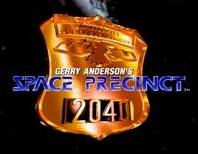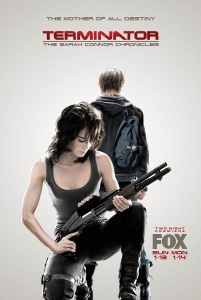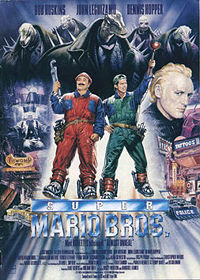Rather appropriately for a weekend which celebrated new life and resurrection, with the release of not one but three new series, this Easter saw something of a comeback for Gerry Anderson. Unlike his resurgence in the early nineties which came courtesy of his classics being given repeat broadcasts (Space Precinct notwithstanding), this years is more impressive for the fact that the series being released are all original(ish) productions, and that this is all happening posthumously.

Having been diagnosed with dementia in the form of Alzheimer’s disease, Anderson sadly passed away on Boxing Day 2012. Never one for retirement however, he continued to create and develop new ideas for as long as he was physically and mentally able, even dictating them to others after the ability to read and write had left him.
The last project he was working on was also the first to have been released, when last Thursday saw Black Horizon become available to the general public. With plenty of notes and outlines left behind, Gerry’s younger son Jamie Anderson recruited the services of author M.G. Harris and brought Gemini Force One to the attention of crowdfunding site Kickstarter; the result of which was raising over £33,000 to bring this this new idea to life.

Looking at the fantastical concept of Thunderbirds, Anderson delved deeper into the idea of how such a rescue organisation could conceivably be created and operate. These range from basic ideas that include bland uniforms specifically designed to blend in to any situation, to their secret underwater base (Gemini Force One itself) being hidden from view by revolutionary lightbending technology.
The release of Black Horizon, the first in a planned trilogy of novels, is also something that I personally have a number of connections with. Firstly, as one of the 614 backers, I can say that I helped GF1 became the reality it is today; something confirmed by the fact that my name is printed in black and white in the book itself.
Having received my kickstarter copy of the book last year, I was also able to write a review for it at WhatCulture before its general release. As I guess is often the case when you write a favourable piece about something people have spent so much time and energy on, both Jamie and M.G. shared my review on social media. Gratifying enough on its own, but the fact that this review is also being quoted on the book’s page at Amazon is something that I have to admit I’m also rather chuffed with. (The review itself, along with a more in-depth description of GF1 can be found here.)
In the week since its release, extra deleted chapters have also been made available, and can be downloaded from the official website, geminiforce1.com.
The second, and much more anticipated release, was Thunderbirds Are Go, a new TV series which combines traditional model making techniques with computer generated characters. Although obviously based on the most famous series created by Anderson (alongside his then wife Sylvia), this incarnation is a joint production between ITV Studios, Pukeko Pictures, and Weta Workshops. Officially announced by Gerry Anderson himself back in 2011, just how much he was involved in the production of the series is hard to say; presumably very little but, unlike the 2004 Hollywood effort, we can be assured that Thunderbirds Are Go at least had his blessing.

Jamie has also been involved of sorts, acting again as Anderson’s successor/figurehead when doing interviews to promote the series. These have included The One Show, but perhaps the most interesting was on Sky News where the interviewer that seemed to imply the series was created solely to make use of tax loopholes.
Rather than sing its praises indiscriminately however, he has been promoting it in terms of celebrating its classic origins, allowing the new footage to speak for itself. One way in which he did make his opinions about the new series well-known however, was by writing a piece published by the Telegraph, about how CGI can never replace strings.
Although Jamie may be siding with those of earlier generations, it has to be said that Anderson Sr. himself wasn’t dismissive of the CGI revolution’s ability to update his series’ visuals, as the last to be produced before his death, 2005’s New Captain Scarlet, was produced in full CGI “Hypermarionation”.

Eagerly scouring pictures and information that was released in the run up to the show’s broadcast, it was with great curiosity that I watched Reggie Yates’ preview documentary Thunderbirds Are Go: No Strings Attached. Despite the reassurance of not just the names of those involved (from actor David Graham returning to the role of Parker, and a script by David Baddiel), but the passion of those involved, my fears about CGI and modernisation weren’t quenched.
So it was that not having been convinced by the clips of what I had seen, but still with an open mind, I sat down and watched the pilot episode, “Ring Of Fire.” CGI aside, the main changes have come from the show’s narrative, the most obvious being the fact that dad Jeff Tracy is now missing. Several allusions are made to a mysterious crash in which he disappeared, explaining his absence but also adding a sense of mystery that will presumably be a recurring arc over the run of the series. ‘Tin Tin’ has also been given a more prominent role, as well as the new name of Kayo, presumably so as not to upset anyone associated with the latest adventures of Herge’s finest, given her now more involved and adventurous role.
And in the end, I have to admit I was pleasantly surprised. It is hardly perfect as the CGI and practical models don’t always mesh well, particularly during the heavy action sequences, and it is not something that will ever replace (although I highly doubt this was the intention) or surpass (you’d have to ask them) the original series. That said, it was something which appealed to me as both someone who cannot help but pick apart and analyse TV, and as a fan of Anderson’s previous work. Of all the things that they did get right, luckily the iconic Thunderbird lauch sequences, complete with bending trees, was one of them, and brought the biggest smile to my face.
 Following on from these was also the release of a new Terrahawks box set from Big Finish, a series of 8 audio episodes, one of which can be downloaded for free. Admittedly a series of which I initially knew less than Big Finish itself (a company established to continue Doctor Who after the original TV was cancelled, and which has since expanded to produce material for other sci-fi series including Stargate and Blake’s 7).
Following on from these was also the release of a new Terrahawks box set from Big Finish, a series of 8 audio episodes, one of which can be downloaded for free. Admittedly a series of which I initially knew less than Big Finish itself (a company established to continue Doctor Who after the original TV was cancelled, and which has since expanded to produce material for other sci-fi series including Stargate and Blake’s 7).
Something obviously aimed at an existing audience rather than a new one, the medium of audio adventures seems something at odds with the rest of Anderson’s back catalogue, given that his name has become synonymous with brightly coloured vehicles and giant explosions. Whilst even the written word of Gemini Force One can describe the detailed visuals, audio Terrahawks doesn’t actually seem that out-of-place, and is probably the most suited to this new (for Anderson) medium. Populated by characters with caricatured accents, these new adventures make the most of what audio has to offer; the sound of spring like motions rather than footsteps is a great way to establish the robotic nature of the series, and never has the idea of a room being so silent been so cleverly (and funnily) portrayed). The fact that Jamie was involved in terms of both writing and directing episodes also adds the desired amount of authenticity.
Despite the vastly different media, and varying degrees of publicity, all three of the latest Gerry Anderson projects may not have been met with universal praise (I guess you can’t please everybody), but at least with a favourable response that bodes well for the fact this is still just the beginning.
Black Horizon is the first in a trilogy, Thunderbirds Are Go has already been confirmed for a second season, and the current Terrahawks box set is merely volume 1. Add to this that there is even more on the way (Jamie’s latest kickstarter project, Firestorm, was funded back in November), stand by for action indeed!!!







